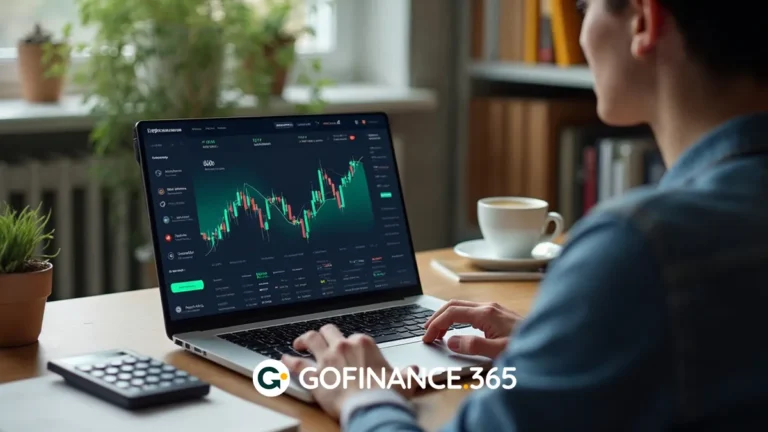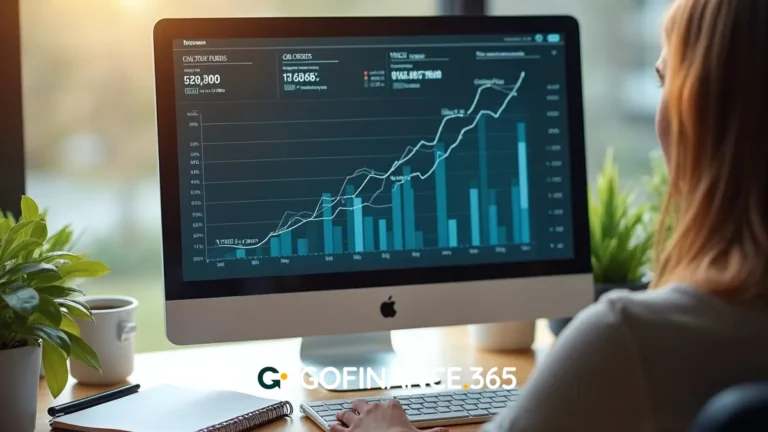Table of Contents:
Did you know that more than 70% of investors who use digital tools achieve better diversification and greater control of their assets than those who manage their investments manually? Investment portfolio management software not only makes it easier to analyze your assets, but also helps you make quick, informed, and confident decisions.
Keep reading to discover the main features of these tools, the top options for 2025, and how to choose the ideal software for your investor profile. Let’s get started!
What is investment portfolio management software?
Investment portfolio management software is a digital tool designed to centralize, analyze, and control all your financial assets in one place. From stocks and bonds to index funds, cryptocurrencies, or real estate, these platforms provide a complete view of your assets with real-time data updates.
Unlike a simple spreadsheet, portfolio software integrates advanced algorithms, connectivity with brokers and online banks, as well as predictive features that help you better plan your investments. This makes it an essential ally for both individuals and financial advisors seeking efficiency and transparency in their management.
How it helps investors and financial advisors
For an individual investor, it means simplifying portfolio tracking, receiving risk alerts, and accurately assessing profitability.
For a financial advisor, on the other hand, it is a tool that professionalizes their service: it allows them to manage multiple client portfolios, generate customized reports, and ensure efficient risk control.
Differences from other financial software
While accounting or personal finance software focuses on expenses, income, and budgets, portfolio management software focuses on optimizing investments. This means that it analyzes the evolution of assets, their profitability, and their exposure to risk, while also integrating diversification metrics that no other traditional financial tool offers.
Key features that all portfolio software should include
Not all programs are the same, but there are features that all good portfolio software should offer to ensure professional and efficient use.
An investor who chooses a tool without these features runs the risk of losing accuracy, relying on manual calculations, or making decisions based on incomplete information.
Historical and real-time data analysis
Allows you to review how an investment has performed in the past and combine it with live data to make quick decisions.
Portfolio optimization and diversification
Through mathematical models such as modern portfolio theory, it recommends adjustments that reduce risk and maximize returns.
Performance tracking with integrated dashboards
Dynamic dashboards graphically display the performance of each investment, making it easy to interpret even for beginners.
Customized alerts for quick decisions
Automatic notifications when an asset exceeds a certain loss or gain threshold, helping you react immediately.
Creation of model portfolios for different risk profiles
Design portfolios tailored to conservative, moderate, or aggressive profiles, ready to compare and apply.
Best portfolio management software in 2025
In 2025, the market offers a wide range of options that suit both large financial institutions and small investors just starting out.
Here is a selection of this year’s most notable options:
Fidelity, Vanguard, and BlackRock: global analysis solutions
Fidelity, Vanguard, and BlackRock are financial giants that offer integrated platforms, ideal for institutional clients and high net worth individuals. Their strength lies in data reliability and market forecasting.
InvestGlass: management with artificial intelligence
InvestGlass is software that combines financial analysis with AI, allowing patterns to be detected and personalized recommendations to be automated.
T-Advisor: financial planning and advanced optimization
Very popular in Europe, T-Advisor is independent software that stands out for its backtesting and real-time portfolio optimization modules.
Macroaxis and Juniper Square: specialized platforms
Macroaxis excels in risk analysis and Juniper Square in real estate investment management. Both are benchmarks in their respective niches.
How do I choose the best portfolio management software for me?
Selecting the right tool will depend on your investor profile and the goals you are pursuing.
A beginner can start with free or low-cost versions, while a wealth manager will need more comprehensive solutions capable of integrating multiple accounts and clients.
Factors to evaluate before signing up for a platform
- Regulation
- Data security
- Ease of use, cost
- Compatibility with your broker or bank
- Quality of analysis metrics.
Comparison between free and paid options
Free options tend to be more limited in advanced features, but they are useful for getting started. Paid options include sophisticated algorithms and specialized technical support.
Integration with brokers and online banks
Software that connects directly to your bank and investment accounts saves you time and errors, as well as offering more precise and automatic control.
Software as an ally of modern investing
In a world where markets are increasingly complex and globalized, relying solely on intuition is no longer enough. Investment portfolio management software has become an essential tool for controlling risk, optimizing portfolios, and accurately projecting results.
Whether you are a small investor looking to start with little capital or a financial advisor managing large assets, choosing the right platform can mean the difference between success and frustration. The market offers alternatives for all profiles. Take the first step toward better management of your investments!
Frequently asked questions about portfolio management software
Before choosing investment portfolio management software, many investors and financial advisors ask themselves the same questions. Resolving these doubts is key to making an informed decision and avoiding costly mistakes. Here you will find detailed answers that will help you better understand how these tools work in 2025.
What is the difference between portfolio management software and a robo-advisor?
Management software gives the user complete control, while a robo-advisor manages the investment automatically without the investor’s active intervention.
Is it safe to connect my bank accounts to these programs?
Yes, as long as the platform is regulated and uses advanced encryption. The best software complies with international regulations such as GDPR or PSD2.
Are there free options for small investors?
Yes, from freemium versions of apps to basic platforms that allow you to manage small portfolios at no initial cost.
Who should use portfolio management software?
Anyone with investments, whether a beginner starting out with stocks or a financial advisor managing multiple clients.















